I headed out from the parking lot at Hampton Plantation State Historic Site away from a main attraction – the plantation mansion. The trail had a new sign – Enslaved Community Trail, but was a familiar path. I was the only visitor at Hampton at that time of the day, and was greeted by the calls of crows, and the attention of a generous population of mosquitoes. I tried to not let the latter worry me.
The trail led to a site where I spent several days at a community archaeology program a few years ago (see Beneath the Surface). The exposed brick foundation was the visible remains of the slave dwelling excavated and studied here. To make the building more tangible, a viewer allows people the opportunity to overlay an artist’s rendering of the house over the brick foundation.
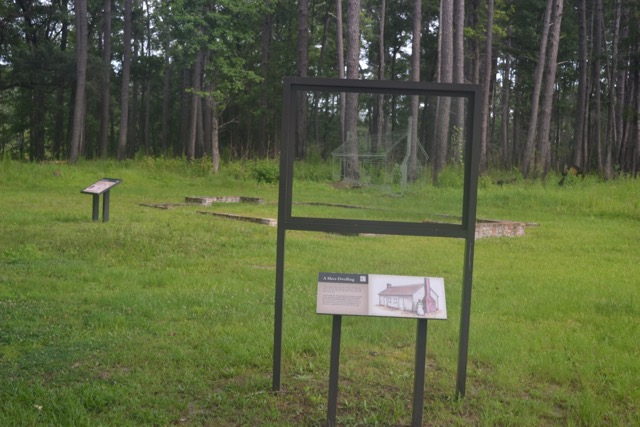
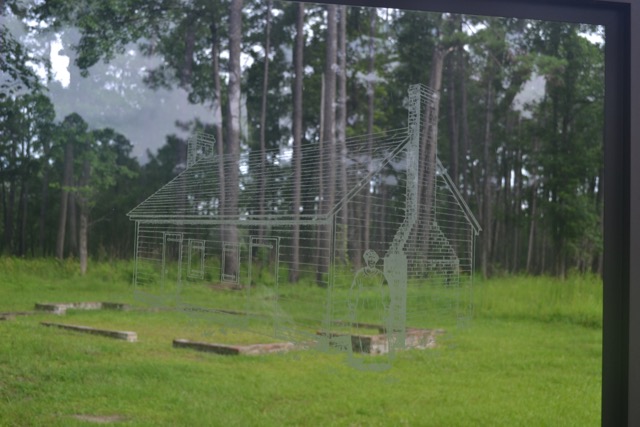
Just beyond this site, the trail passes a former rice field, Mainfield, and an interpretive sign explores “Lifetimes of Labor” for the enslaved at Hampton.
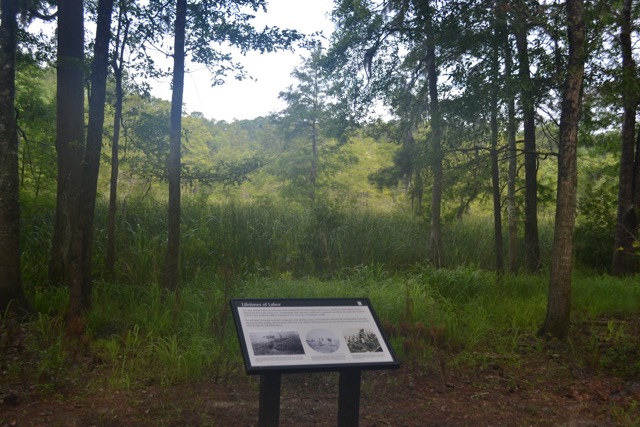
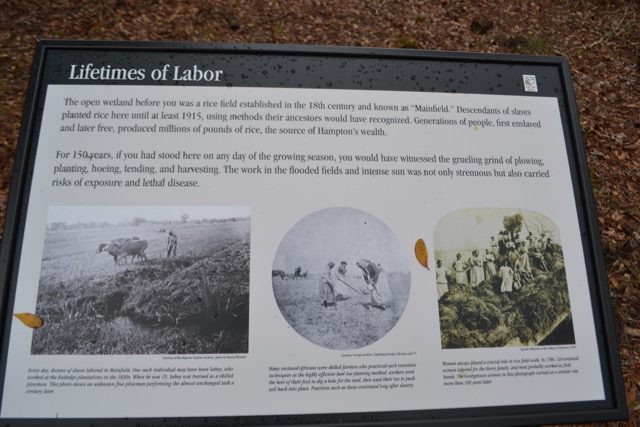
The Lifetimes of Labor sign is just one of many that tell the story of the enslaved and their lives at Hampton, and their descendants. Hampton Plantation does an excellent job of bringing this history to the interpretive forefront with signage. This expansion of the plantation narrative is also taking place at other public and private sites in the Lowcountry, including the Charles Pinckney National Historic Site and Middleton Place, and nationally at Monticello and Mount Vernon. At Hampton this interpretation does not exclude the white elite – the Horrys, Pinckneys, and Rutledges – but tells their story alongside the Alstons, Snyders, and Boykins. Visitors have the opportunity to learn about one important aspect of South Carolina and U.S. history – slavery – at Hampton, and particularly about rice culture and slavery in SC.
The path continued on past Mainfield to the dike separating it from the wetlands near Hampton Creek, alternately called Wambaw Creek. The trail turned to the right, but I took a narrow path out on the dike until stopped by an opening where the waters flow into Mainfield and out to Hampton Creek. It seemed like a place where a tide trunk would have been located, though was now missing.
A side trail headed down to the wetlands of Hampton Creek and a boardwalk allowing a view of Hampton Island, once filled with rice fields worked by the enslaved at Hampton. I recalled a canoe trip around this island years ago (See Circling Hampton Island). A sign on the boardwalk recounted the escape to freedom in 1795 by Jack (an enslaved boatman) who utilized a dugout equipped with a sail. The outcome of Jack’s effort was not documented, and I wondered about his fate.
Returning to the main trail, I noted it was wide and mowed, unlike the path I walked in September around the Santee Delta Wildlife Management Area with knee-high growth. The trail crossed over a tide trunk, and a sign described this water control device. The project of repairing this dike and replacing the trunk was accomplished in the past decade, and involved the use of heavy equipment, including a dump truck and excavator. This work was quite a contrast to the processes of building and installing trunks employed in the eighteenth and nineteenth centuries.
The trail dropped down to an opening near Hampton Creek, and to the right the land rose up to the site of the Hampton mansion and before it the Kitchen House. These are the two most important historic structures at Hampton – the mansion of the eighteenth century (circa 1740), and the kitchen building of the nineteenth century. Coming up this rise in elevation, a garden of ornamental plantings appeared to the left, wherein lies the graves of John Henry Rutledge and Archibald Rutledge.
On the far side of the house, the Adamesque portico faced a large live oak, famously known as the Washington oak. Reportedly when President George Washington visited here in 1791, he was asked from this portico if a live oak should be cut down to open up the view, and he replied to leave it.
The renovation of the house was initiated by the last private owner of Hampton – Archibald Rutledge. Rutledge was the first poet laureate of South Carolina. He wrote a number of books, many with a nature focus, and two are centered on Hampton – Home by the River, and God’s Children.
Just beyond the Washington oak was one of the avenues across Hampton, the Holly Avenue. Archibald Rutledge had African American workers transplant American holly trees flanking this road. It appeared that this avenue originally extending all the way to Rutledge Road, but now intersects the main entrance/exit road.
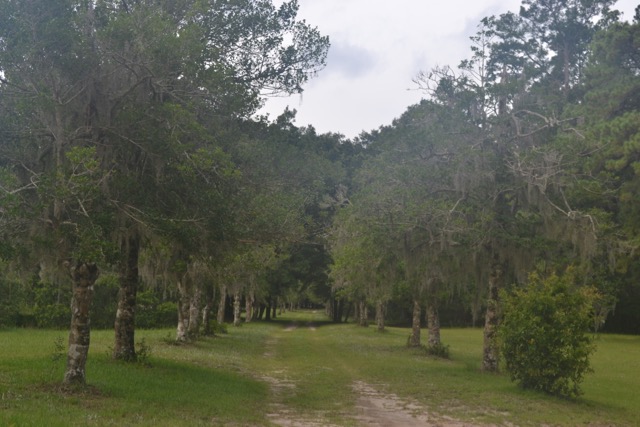
I came full circle to the parking lot, enabling a reexamination of the remains of a 1930s structure. A chimney now supported by a large concrete brace once heated the house of Prince and Sue Alston. Prince had been a close boyhood friend of Archibald Rutledge; his wife Sue became known as the Angel of Hampton, working for the Rutledge family for over seventy years, and living to the age of 110. The Alstons were descendants of enslaved members of the Hampton and Wambaw communities.
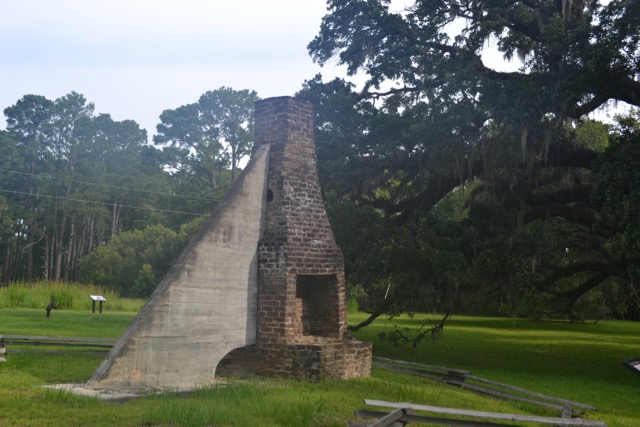
The circuit I walked is the core of Hampton Plantation. Visitors will find the state historic site an easy place to access: just two miles off of Highway 17, with parking and a comfort station. There is no admission fee, though there is a donation box. There are fees for the house tour, which has restarted after a pause during the pandemic. There is much to explore at Hampton in terms of natural and human history, and will always be a place worthy of return visits.
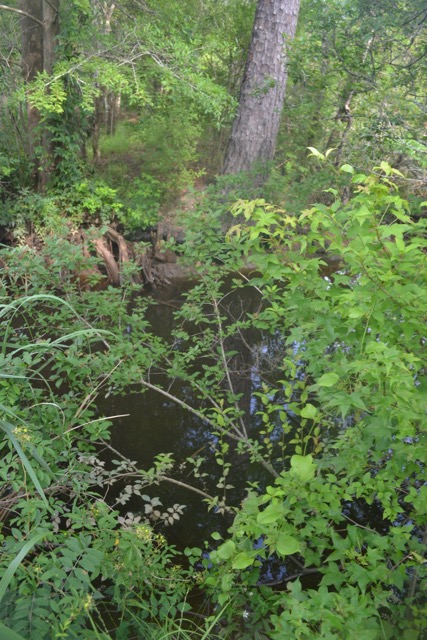
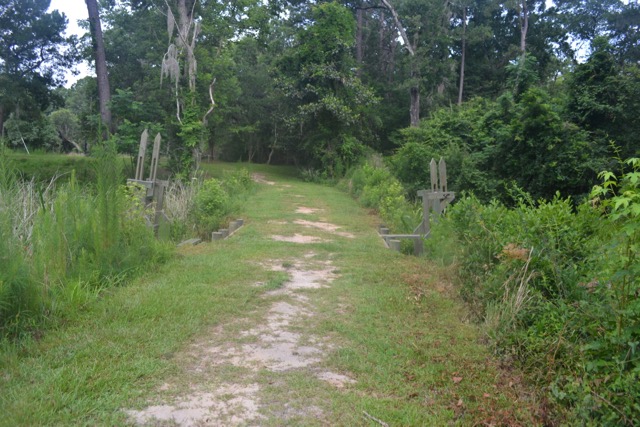
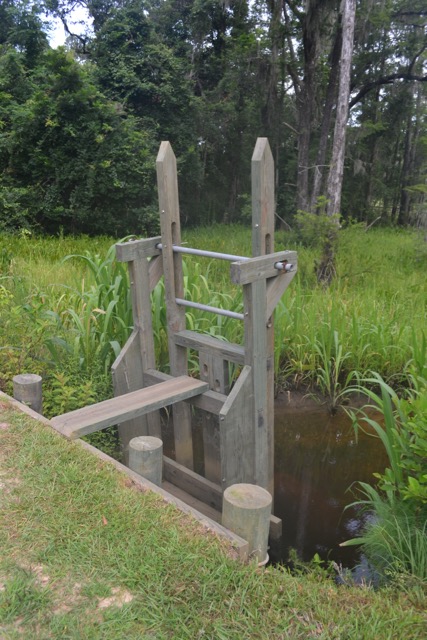

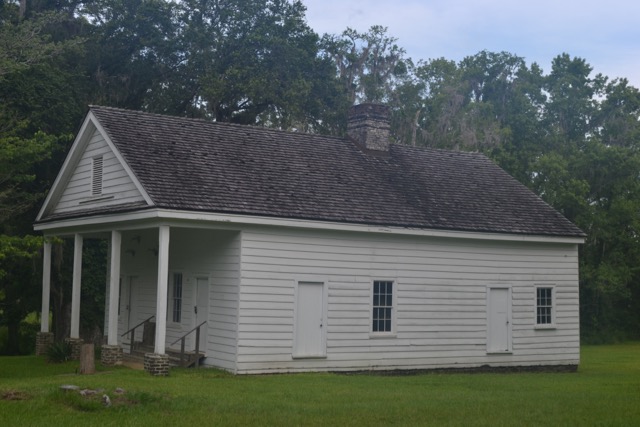
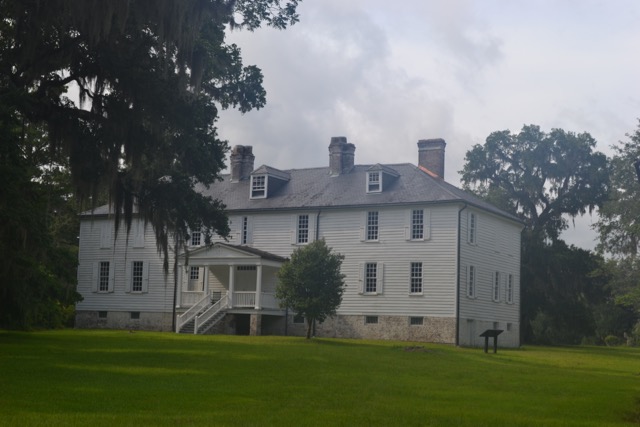

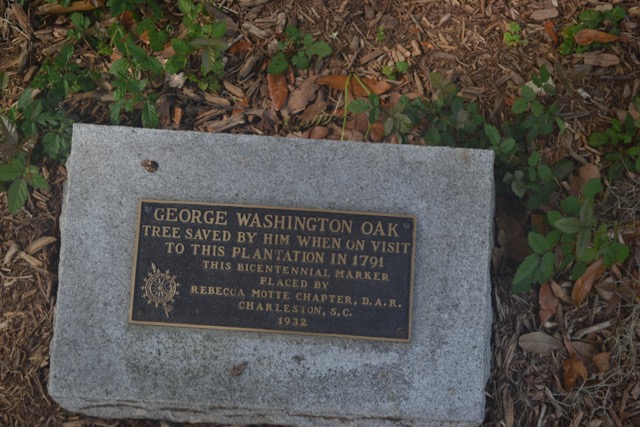
Thanks for sharing as this is a place with a rich history. I want to go and tour the home!
Yes you should!
Nice visit Bob… you’re a brave man to venture there mid summer.
Long sleeves, and acclimation works. No deer flies – didn’t miss them.
Nice review Bob!…we are heading up that way in August on a boat and walking tour with Chris Crolley…
Thanks Ron; that will be a good trip.
Thanks for the info Bob. I’ve added it to the visit list just as soon as the Squita.s start to die down
Honestly, they weren’t that bad. But do add it to your Lowcountry list.
Hey Bob, where’s that new book? We are going to Myrtle Beach in September and I’ll need some beach reading books.
Yeah where is it? Good question, but definitely won’t make your September trip. Will post when we get closer and know something.
This sounds like a good outing having both historic and natural interest. However I think I’ll wait until the bloodsuckers, summer heat, and pop up thunderstorms abate. Approximately, how long are the nature/historic trails? Appreciate your posts of your adventures and what is available in the lowcountry!!
Those trails are relatively short, with other side excursions possible. 1-2 miles approximate. Any time of the year is good, depending on your interests.